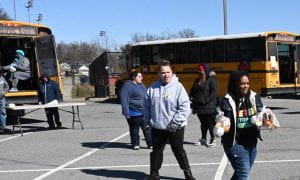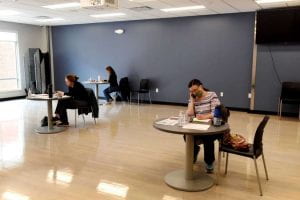The Schenectady County COVID-19 Emergency Response Coalition was started to meet the needs of the community during the Coronavirus Pandemic. In partnership with the Schenectady Foundation, The Boys and Girls Club and several other local organizations, this collaboration works to aid the needs of the community that got effected due to the Coronavirus pandemic. Amidst these trying times, it is refreshing to see that people are taking strides to make positive changes in their respective communities.
Coalition Calms Down Public Health Services Hotline
Very well organized, this coalition is operated in the new Boys and Girls Clubhouse where calls and deliveries are made. The Schenectady County Public Health Services (SCPHS) COVID-19 hotline has been made available to residents with any medical related questions. However, because many residents sought the need for aid that was non medical related, this coalition was created to aid with these issues.

One of the major keys is to address individuals who are isolated seniors, at risk individuals, and children. In doing so, it becomes easier to help them get basic supplies. With a focus on delivering groceries and essential items, thanks to the collaboration of many organizations, it has allowed for many other additional needs to be provided .
Using the number (518) 621-3536, residents can call to identify needs while keeping dietary and allergy restrictions in mind. In addition to this providing of essentials, the staff also have information readily available for other important needs such as health care and assistance with housing. The power of this initiative lies in the freedom it gives the public health hotline as these non-medical related issues can he filtered by the Coalition Hotline.
Aiding One Another Is Not New
This kind of initiative from non-profit organizations are not new to the community of Schenectady. After the Jay Street Fire of 2019, the Schenectady Foundation came up with the Rebuilding Families Fund to assist Jay Street Fire Survivors. They raised over $60,000 and as a community they were able to provide long-term recovery support to residents displaced by the fire. Approximately 60 or more people were affected and rendered homeless but still got the help they needed. Robert Carreau, the executive director of The Schenectady Foundation, stated that $100,000 would be donated toward relief efforts through the Rebuilding Families Fund. Additionally, he stated they would match the first $25,000 in donations as well. While this is hefty amount, no amount of donation is too small. For more information on how you can contribute, the Schenectady Rebuilding Families Fund is accepting donations at www.schenectadyfoundation.org. These funds will be used to provide groceries and many other resources to those in need.
For more information on the partners of this coalition and the many resources they can provide, visit: www.schenectadycounty.com/covid19help.









